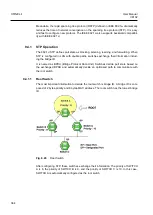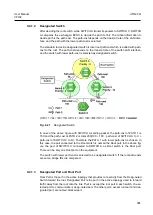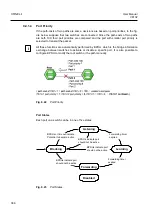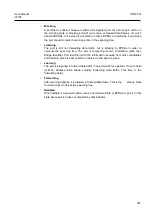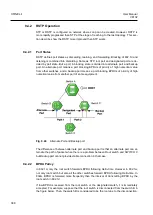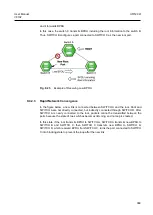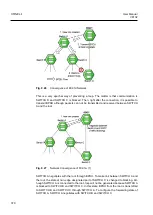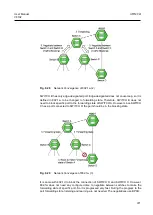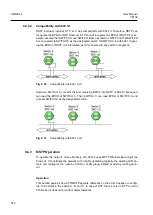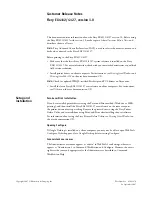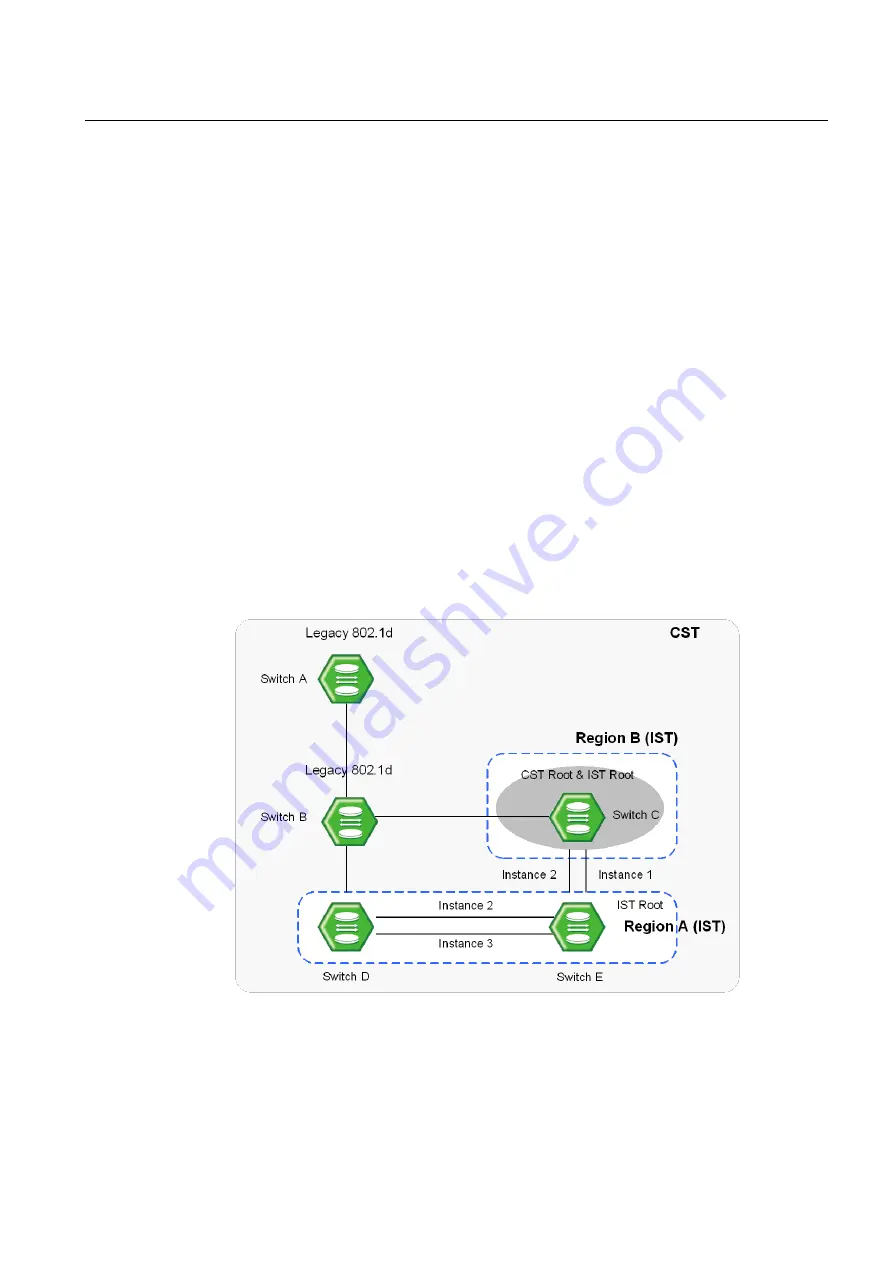
User Manual
UMN:CLI
V8102
373
While existing STP is a protocol to prevent Loop in a LAN, domain establishes STP per
VLAN in order to realize the routing suitable to the VLAN environment.
It does not need to calculate all STPs for several VLANs so that traffic overload could be
reduced. By reducing unnecessary overload and providing multiple transmission routes
for data forwarding, load balancing is realized and multiple VLANs are provided through
Instances.
9.4.3.1
MSTP
In MSTP, VLAN is classified to the groups with the same Configuration ID. Configuration
ID is composed of Revision name, Region name and VLAN/Instance mapping. Therefore,
to have the same Configuration ID, all of the tree conditions should be the same. VLAN
classified with the same Configuration ID is cal
led MST region. In a region, there’s only
an STP so that it is possible to reduce the number of STP compared with
PVSTP. There’s
no limitation for the region in a network environment, however it is possible to generate
Instances up to 64 (1 to 64). Spanning-tree operating in each region is IST (Internal
Spanning-Tree). CST is applied by connecting each spanning-tree of region. Instance 0
means that there is not any Instance generated from grouping VLAN, that is, it does not
operate as MSTP. Therefore Instance 0 exists on all the ports of the equipment. After
starting MSTP, all the switches in CST exchanges BPDU and CST root is decided by
comparing their BPDU. T
he switches that don’t operate with MSTP have Instance 0 so
that they can also join BPDU exchanges. The operation of deciding CST Root is called
CIST (Common & Internal Spanning-Tree).
Fig. 9.32
CST and IST of MSTP (1)
In CST, A and B are the switches operating with STP, and C, D and E are those operating
with MSTP. First, in CST, CIST is established to decide CST Root. After CST root is de-
cided, the closest switch to CST root is decided as the IST root of the region. Here, the
CST root in IST is IST root.






